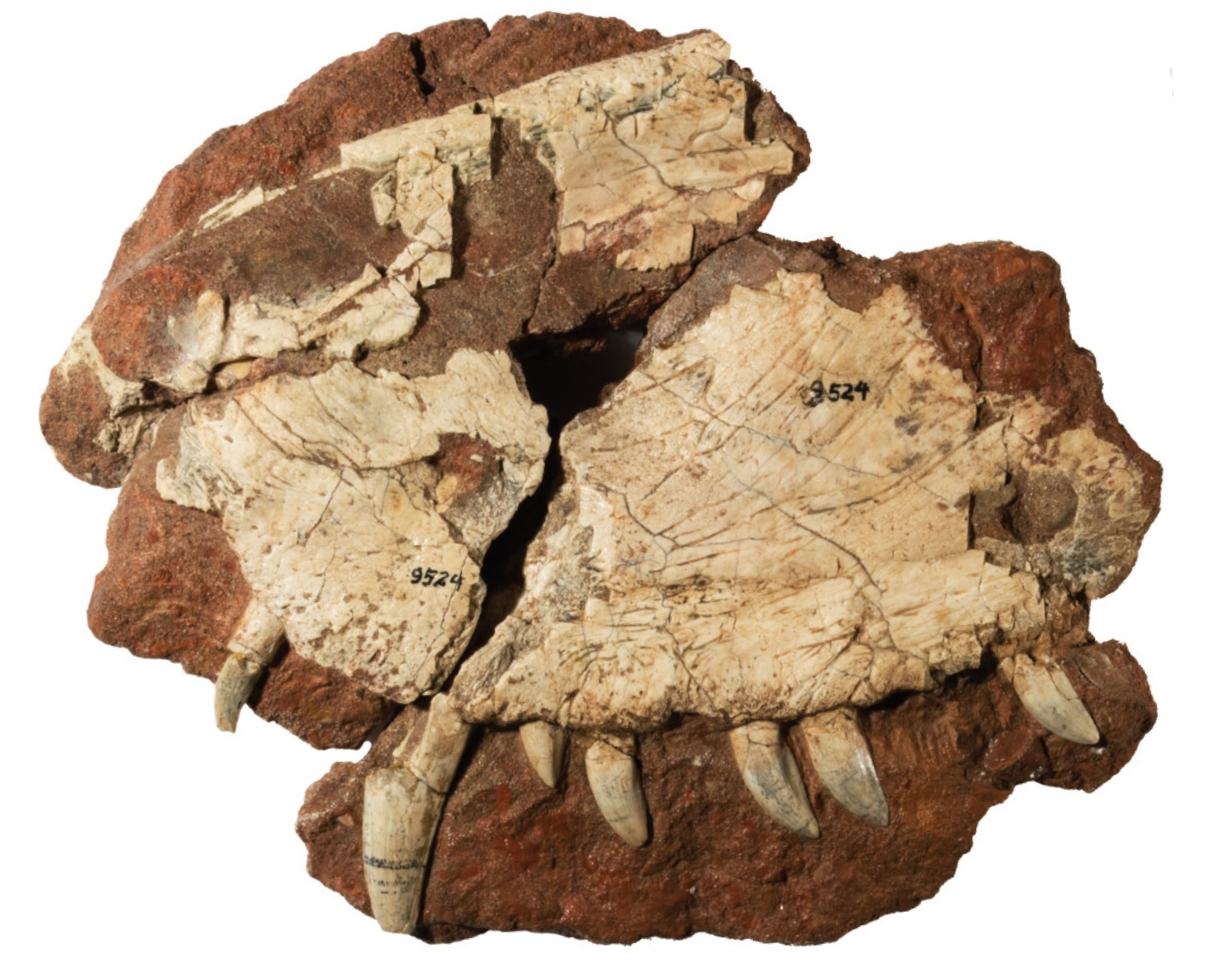Most of the Paleo Profiles I’ve written so far have highlighted new species, either found in the field or rediscovered in museum collections. But this week is a little different. The animal at the center of this story isn’t new to science, but a historic fossil whose identity has just changed.
In 1854, during the early days of American paleontology, the Philadelphia naturalist Joseph Leidy described a new fossil species found on Prince Edward Island, Canada. The piece included several elements from the animal’s upper jaw and, given its general form, Leidy named it Bathygnathus borealis, or “the deep jaw from the north.”
Nothing like Bathygnathus had been seen before. In fact, it was the first fossil of a non-mammalian synapsid – or protomammal – ever described from North America. And in time it became clear that Bathygnathus was not a singular oddity but a close relative of the famous sail-backed protomammal Dimetrodon.
Beyond that, though, there was too little of the animal to know whether or not it was truly something unique. Thanks to the recent work of paleontologist Kirstin Brink and her colleagues, however, the teeth of these protomammals have turned out to be very informative for sorting out who’s who among the sailbacks. Paired with these new insights, a CT scan of Bathygnathus showed that it definitely belonged to the same genus as Dimetrodon.
But here’s the rub. Bathygnathus was named in 1854, but Dimetrodon wasn’t described until 1878. Following the rules of how species are named, that means Bathygnathus has priority over Dimetrodon and could cause a sweeping shift in what we call our most famous high-spined relative. But Brink and coauthors aren’t proposing that. Bathygnathus is a relatively obscure animal known from only a few jaw bones whereas Dimetrodon is well-known, well-studied, and represented by a comparative wealth of fossils. “Bathygnathus” will have to sink from view. Long live Dimetrodon borealis.

Fossil Facts
Name: Dimetrodon borealis
Meaning: Dimetrodon translates to “two kinds of tooth”, while borealis refers to the northern location where the fossil was found.
Age: Early Permian, about 290 to 283 million years old.
Where in the world?: Prince Edward Island, Canada.
What sort of critter?: One of the high-spined protomammals called sphenacodontids.
Size: Not estimated, but likely comparable to the larger species of Dimetrodon.
How much of the creature’s body is known?: Part of the snout including a premaxilla, nasal, maxilla, septomaxilla, and eight teeth.
Reference:
Brink, K., Maddin, H., Evans, D., Reisz, R. 2015. Re-evaluation of the historic Canadian fossil Bathygnathus borealis from the Early Permian of Prince Edward IslandRe-evaluation of the historic Canadian fossil Bathygnathus borealis from the Early Permian of Prince Edward IslandRe-evaluation of the historic Canadian fossil Bathygnathus borealis from the Early Permian of Prince Edward Island. Canadian Journal of Earth Sciences. doi: 10.1139/cjes-2015-0100
Previous Paleo Profiles:
The Unfortunate Dragon
The Cross Lizard
The Cross Lizard
The South China Lizard
Zhenyuan Sun’s dragon
Zhenyuan Sun’s dragon
The Fascinating Scrap
The Fascinating Scrap
The Sloth Claw
The Hefty Kangaroo
Mathison’s Fox
Scar Face
The Rain-Maker Lizard
“Lightning Claw”
The Ancient Agama
The Hell-Hound
The Hell-Hound
The Cutting Shears of Kimbeto Wash
The False Moose
“Miss Piggy” the Prehistoric Turtle
Mexico’s “Bird Mimic”
The Greatest Auk
Catalonia’s Little Ape
Pakistan’s Butterfly-Faced Beast
The Head of the Devil
Spain’s Megatoothed Croc
The Smoke Hill Bird
The Vereda Hilarco Beast

